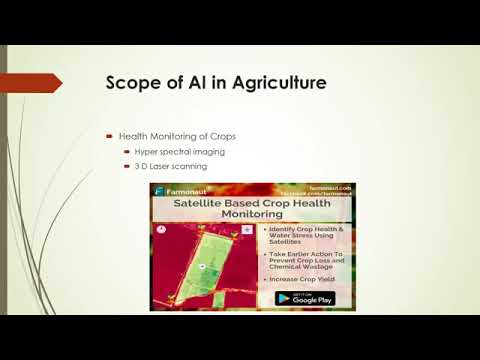Revitalizing Maine’s Economy: Strategic Plan for Growing Foundational Jobs and Attracting Skilled Workers
“Maine ranks among the least productive states economically, highlighting the urgent need for revitalization strategies.”

In recent years, Maine has found itself at a critical economic crossroads. As we delve into the challenges and opportunities facing our state, it’s clear that a strategic, long-term approach is necessary to revitalize our economy and secure a prosperous future for all Mainers. In this comprehensive analysis, we’ll explore Maine’s economic revival plan, with a focus on growing foundational jobs and implementing strategic growth strategies that can transform our state into a competitive, thriving economic powerhouse.
Understanding Maine’s Economic Landscape
Maine’s economy faces significant challenges, with new data revealing that our state ranks among the least productive in the nation. This sobering reality is reflected in several key areas:
- Fewer job creations compared to other states
- Lower levels of investment attraction
- A decrease in new business startups
- Low worker wages that haven’t kept pace with rising costs
These factors contribute to Maine’s struggle to establish itself as a competitive location for businesses. However, it’s crucial to understand that these challenges are not insurmountable. With a strategic plan that builds on our current assets and strengths, we can create a distinctive economy that will put us in healthy competition with other states and global partners.
The Importance of Foundational Jobs
At the heart of our economic revival strategy lies the concept of foundational jobs. These are jobs that add value by producing goods or bringing in money from outside the state. Historically, Maine’s prosperity was built on industries such as farming, fishing, forestry, transportation, and manufacturing. For instance, before the advent of refrigeration, Maine’s ice industry employed a staggering 90,000 people and would be valued at $660 million in today’s economy.
Foundational jobs continue to play a crucial role in modern economies, found in traditional sectors as well as emerging industries like energy, construction, and new technologies. These jobs are the bedrock of thriving communities, driving business expansion, increasing tax revenue, and supporting essential public services such as education, infrastructure, and law enforcement.
Unfortunately, Maine has experienced a steady decline in foundational jobs over the past 15 years. We’ve lost more than 20,000 of these vital positions, with their share of the job market shrinking from 44% to just 14%. This decline has had far-reaching consequences, including:
- Lower wages across the board
- Reduced consumer spending
- A shrinking tax base
- Overall economic downturn
Furthermore, this trend has contributed to a demographic shift, with young workers leaving the state in search of better opportunities. As a result, Maine now has the highest percentage of people over 65 and, historically, the lowest percentage of people under 18 in the country.
Challenges Facing Maine’s Economy
Despite the clear importance of foundational jobs, Maine lacks a comprehensive, long-term plan to protect and grow these industries. Several factors have contributed to the outsourcing of foundational jobs or their relocation to lower-cost states:
- High electricity costs
- Expensive heating
- Rising healthcare expenses
- Burdensome tax rates
- Generally lower wages compared to other states
These challenges have turned what should be a noncontroversial goal – growing good-paying jobs that support families and communities – into a political issue. Debates around tax rates, public spending, education, business regulation, housing, energy, and healthcare costs often become isolated, cyclical political arguments rather than viewed as interconnected pieces of Maine’s economic puzzle.
“Foundational industries like farming, fishing, and forestry in Maine have experienced significant decline, prompting a focus on emerging sectors.”
Opportunities for Maine’s Economic Future
Despite these challenges, Maine is not without opportunities for growth and revitalization. Technological and industrial developments present new avenues for expansion into emerging sectors that can rejuvenate our economy. Some of these opportunities include:
- Tech manufacturing
- Wireless infrastructure development
- Renewable energy initiatives
- Biotechnology and life sciences
- Advanced materials and composites
By encouraging small business growth and attracting highly skilled workers, we can improve tax revenue and drive economic revival. These efforts can be supported by leveraging Maine’s unique assets, such as its natural resources, quality of life, and strong work ethic.

A Strategic Plan for Maine’s Economic Revival
To address these challenges and capitalize on emerging opportunities, we propose a comprehensive strategic plan focused on revitalizing Maine’s economy. This plan encompasses several key aspects:
- Reducing costs for Maine businesses: Especially for small and medium-sized foundational enterprises, enabling them to take risks and expand.
- Workforce development: Training and educating the workforce for skilled trades and foundational job sectors.
- Attracting new industries: Identifying and attracting emerging foundational industries and associated jobs to Maine.
- Increasing state revenue: Organically growing state revenue to support public services and infrastructure.
- Cost reduction for residents: Implementing measures to reduce costs for resident families and businesses.
- Long-term economic impact assessment: Evaluating the long-term economic impact of new laws, especially as they pertain to foundational jobs and job security.
Implementing the Strategic Plan
To successfully implement this strategic plan, we must focus on several key areas:
1. Fostering Innovation and Entrepreneurship
Encouraging innovation and entrepreneurship is crucial for creating new foundational jobs and industries. We can achieve this by:
- Establishing business incubators and accelerators
- Providing tax incentives for startups and small businesses
- Facilitating access to capital for entrepreneurs
- Promoting collaboration between universities and industry
One innovative approach to supporting entrepreneurship in the agricultural sector is through the use of advanced technologies. For instance, Farmonaut’s crop plantation and forest advisory services can help new and existing farmers optimize their operations, potentially creating more jobs in the agriculture industry.
2. Investing in Infrastructure
Upgrading and expanding Maine’s infrastructure is essential for attracting businesses and improving quality of life. Key areas of focus include:
- Broadband internet expansion
- Transportation network improvements
- Renewable energy infrastructure
- Modernization of ports and logistics facilities
3. Enhancing Workforce Development
To meet the demands of both traditional and emerging industries, we must invest in workforce development through:
- Targeted vocational training programs
- Partnerships between educational institutions and businesses
- Apprenticeship programs in high-demand fields
- Retraining initiatives for workers in declining industries
4. Promoting Maine’s Quality of Life
Leveraging Maine’s natural beauty and quality of life can help attract skilled workers and businesses. We can achieve this by:
- Marketing Maine’s outdoor recreational opportunities
- Investing in arts and culture
- Improving healthcare access and quality
- Developing affordable housing options
Leveraging Technology for Economic Growth
In today’s digital age, leveraging technology is crucial for economic growth and competitiveness. Maine can benefit from adopting innovative technologies across various sectors:
1. Agriculture and Forestry
Precision agriculture and smart forestry management can revolutionize these traditional industries. For example, Farmonaut’s large-scale farm management solutions offer advanced satellite-based monitoring and AI-driven insights that can help Maine’s farmers and foresters optimize their operations, potentially leading to increased productivity and job creation.
2. Manufacturing and Industry
Adopting Industry 4.0 technologies such as robotics, artificial intelligence, and the Internet of Things (IoT) can enhance productivity and create new high-skilled jobs in manufacturing. Additionally, implementing carbon footprinting solutions can help Maine’s industries become more sustainable and competitive in the global market.
3. Fisheries and Aquaculture
Implementing advanced monitoring and management systems can help sustain Maine’s vital fishing industry while promoting sustainable practices. Technologies like blockchain-based traceability solutions can enhance the value of Maine’s seafood products by ensuring transparency and quality throughout the supply chain.
4. Tourism and Hospitality
Leveraging digital platforms and data analytics can help Maine’s tourism industry better target potential visitors and enhance their experience. This can lead to increased visitor numbers and revenue, supporting job growth in the sector.
Attracting and Retaining Skilled Workers
A crucial component of Maine’s economic revival is attracting and retaining skilled workers. To achieve this, we must focus on:
- Creating high-quality, well-paying jobs across various sectors
- Developing affordable housing options in key economic areas
- Improving educational opportunities at all levels
- Enhancing quality of life through improved healthcare and recreational amenities
- Implementing targeted marketing campaigns to attract young professionals and families
By addressing these factors, we can create a more attractive environment for skilled workers, which in turn will help drive economic growth and innovation across the state.
Maine’s Economic Sectors: Current Status and Growth Potential
| Sector | Current Employment Rate | Contribution to State GDP | Growth Potential |
|---|---|---|---|
| Agriculture | 2.5% | 1.8% | Medium |
| Fishing | 1.2% | 1.5% | Medium |
| Forestry | 2.8% | 2.2% | Medium |
| Technology | 3.5% | 4.2% | High |
| Healthcare | 17.5% | 12.8% | High |
| Tourism | 10.2% | 6.5% | Medium |
| Manufacturing | 8.5% | 11.2% | Medium |
This table provides a snapshot of Maine’s key economic sectors, their current status, and future growth potential. It highlights the need for a balanced approach that supports traditional industries while fostering growth in emerging sectors.
Conclusion: A Collaborative Approach to Maine’s Economic Future
Revitalizing Maine’s economy and growing foundational jobs is a complex challenge that requires a collaborative, long-term approach. By focusing on reducing costs for businesses, developing our workforce, attracting new industries, and leveraging our unique strengths, we can create a thriving, competitive economy that benefits all Mainers.
The success of this strategic plan depends on the collective efforts of policymakers, business leaders, educators, and citizens working together towards a common goal. By embracing innovation, investing in our people and infrastructure, and promoting Maine’s unique qualities, we can build a resilient and prosperous economy that will secure a bright future for generations to come.
As we move forward, it’s crucial to remember that economic development is an ongoing process. We must remain adaptable, continuously evaluating and adjusting our strategies to meet the evolving needs of our state and its people. With dedication, innovation, and a shared vision for success, Maine can overcome its economic challenges and emerge as a leader in the global economy.
FAQs
- What are foundational jobs, and why are they important for Maine’s economy?
Foundational jobs are those that add value by producing goods or bringing in money from outside the state. They are crucial for Maine’s economy as they drive business expansion, increase tax revenue, and support essential public services. - How has Maine’s economy been performing in recent years?
Maine has been facing significant economic challenges, ranking among the least productive states in the nation with fewer job creations, lower investment attraction, and a decrease in new business startups. - What are some key strategies for revitalizing Maine’s economy?
Key strategies include reducing costs for businesses, developing the workforce, attracting new industries, investing in infrastructure, and promoting Maine’s quality of life to attract skilled workers. - How can technology contribute to Maine’s economic growth?
Technology can drive growth by enhancing productivity in traditional industries like agriculture and forestry, enabling the adoption of Industry 4.0 practices in manufacturing, and supporting emerging sectors like renewable energy and biotechnology. - What role does workforce development play in Maine’s economic revival plan?
Workforce development is crucial for meeting the demands of both traditional and emerging industries. It involves targeted vocational training, partnerships between educational institutions and businesses, and retraining initiatives for workers in declining industries.
For more information on how technology can support Maine’s agricultural sector and contribute to economic growth, visit Farmonaut.
Earn With Farmonaut: Join Farmonaut’s affiliate program and earn 20% recurring commission by sharing your promo code and helping farmers save 10%. Onboard 10 Elite farmers monthly to earn a minimum of $148,000 annually—start now and grow your income!






